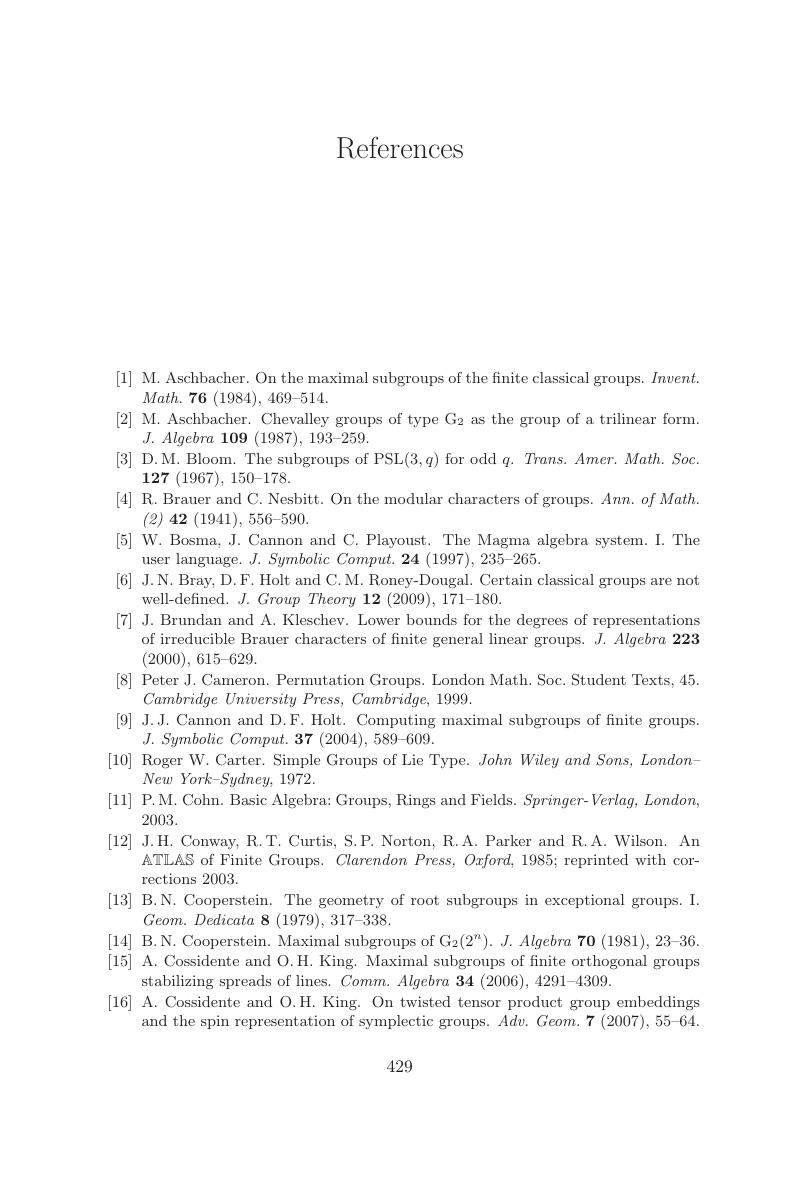Book contents
- Frontmatter
- Contents
- Foreword
- Preface
- 1 Introduction
- 2 The main theorem and the types of geometric subgroups
- 3 Geometric maximal subgroups
- 4 Groups in Class J: cross characteristic
- 5 Groups in Class J: defining characteristic
- 6 Containments involving J-subgroups
- 7 Maximal subgroups of exceptional groups
- 8 Tables
- References
- Index of Definitions
- References
References
Published online by Cambridge University Press: 05 July 2013
- Frontmatter
- Contents
- Foreword
- Preface
- 1 Introduction
- 2 The main theorem and the types of geometric subgroups
- 3 Geometric maximal subgroups
- 4 Groups in Class J: cross characteristic
- 5 Groups in Class J: defining characteristic
- 6 Containments involving J-subgroups
- 7 Maximal subgroups of exceptional groups
- 8 Tables
- References
- Index of Definitions
- References
Summary

Information
- Type
- Chapter
- Information
- Publisher: Cambridge University PressPrint publication year: 2013
